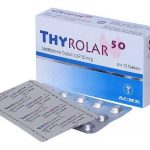
Contents
- 1 Mammogram
- 1.0.1 Does a mammogram hurt?
- 1.0.2 When should I get my first mammogram, and what are the breast cancer screening guidelines?
- 1.0.3 What are the risks of mammography?
- 1.0.4 What if I have breast implants?
- 1.0.5 How do I prepare for a mammogram?
- 1.0.6 How is a mammogram performed?
- 1.0.7 What if my mammogram is abnormal?
- 1.0.8 How much does a mammogram cost?
Mammogram
A mammogram is an X-ray test that produces an image of breast tissue. This technique, called mammography, is used to visualize structures within the breasts, such as cysts, calcifications, and tumors. It is the most efficient screening method for detecting early breast cancer. Physical examinations typically find larger breast cancers compared to those detected by mammography.
Mammography can detect small cancers in a curable stage, but it is not foolproof. Around 10-15% of breast cancers are not identified by mammography, which is why it is important for women to perform monthly breast self-examination (BSE) and have regular breast examinations by doctors in addition to mammograms.
The American Cancer Society recommends a woman’s first baseline mammogram at age 40, followed by yearly mammograms. High-risk individuals may need mammograms earlier and at more frequent intervals. The cost of mammography is generally covered by Medicare, Medicaid, and most private insurance companies.
Does a mammogram hurt?
A mammogram involves placing the breasts on a firm flat panel and applying gentle but firm pressure with another panel, resulting in temporary discomfort that lasts only a few seconds.
When should I get my first mammogram, and what are the breast cancer screening guidelines?
Organizations have differing recommendations regarding the timing and frequency of mammography.
- The American Cancer Society advises a woman’s first baseline mammogram at age 45, followed by yearly mammograms until age 54, and then every 2 years for women 55 and older.
- The US Preventive Services Task Force (USPSTF) recommends mammograms every other year starting at age 50 until age 74.
- Both the American College of Obstetricians and Gynecologists and the American College of Radiology recommend yearly mammograms starting at age 40. High-risk individuals may need mammograms earlier and at more frequent intervals.
What are the risks of mammography?
Mammography involves a low amount of radiation. Patients who are pregnant or may be pregnant should notify their healthcare provider and radiology staff because radiation can pose risks to the fetus.
What if I have breast implants?
Inform the mammography facility about breast implants when making an appointment. Mammography may be more challenging to interpret with breast implants, so it’s important to choose a center with experience in performing mammography on patients with implants for best results.
How do I prepare for a mammogram?
A mammogram does not require special preparation. Women with menstrual periods may find it more comfortable not to schedule a mammogram in the week before their expected period when breasts may be tender.
Antiperspirants, deodorants, and powders should not be worn during mammography as they can make interpretation of the results difficult. Antiperspirants can cause the images to appear foggy, and powders can simulate the appearance of microcalcifications.
How is a mammogram performed?
Prior to the mammogram, a brief medical history is taken, including any breast-related problems. A marker may be taped over a palpable lump to determine if additional mammogram views are needed. Jewelry and clothing around the chest and breast area are removed before the mammogram. The breasts are placed on a firm flat panel, and pressure is applied to compress the breasts. This compression may cause brief discomfort but is necessary for obtaining quality mammograms. Generally, two X-rays are taken of each breast. Additional views may be necessary depending on breast size, implants, or areas that require further examination.
A radiology technologist performs the mammography, and a radiologist interprets the X-ray pictures. The results of the mammogram are typically given by both the radiologist and the doctor who ordered the mammogram.
What if my mammogram is abnormal?
An abnormal mammogram does not mean the presence of cancer. Most abnormal mammograms are caused by benign processes. Further evaluation, additional mammograms, ultrasounds, visits to breast disease specialists, or biopsies may be recommended for suspicious areas.
A breast biopsy, either surgically or as a stereotactic core biopsy, may be performed to examine suspicious breast tissue. Most breast biopsies yield benign results. Mammography is the best available method for breast cancer screening, leading to the detection and treatment of smaller and more curable breast cancers.
How much does a mammogram cost?
Mammography is generally covered by Medicare, Medicaid, and most private insurance companies.
Wayne S. Blocker, MD; Board Certification Obstetrics and Gynecology
Wayne S. Blocker, MD; Board Certification Obstetrics and Gynecology


